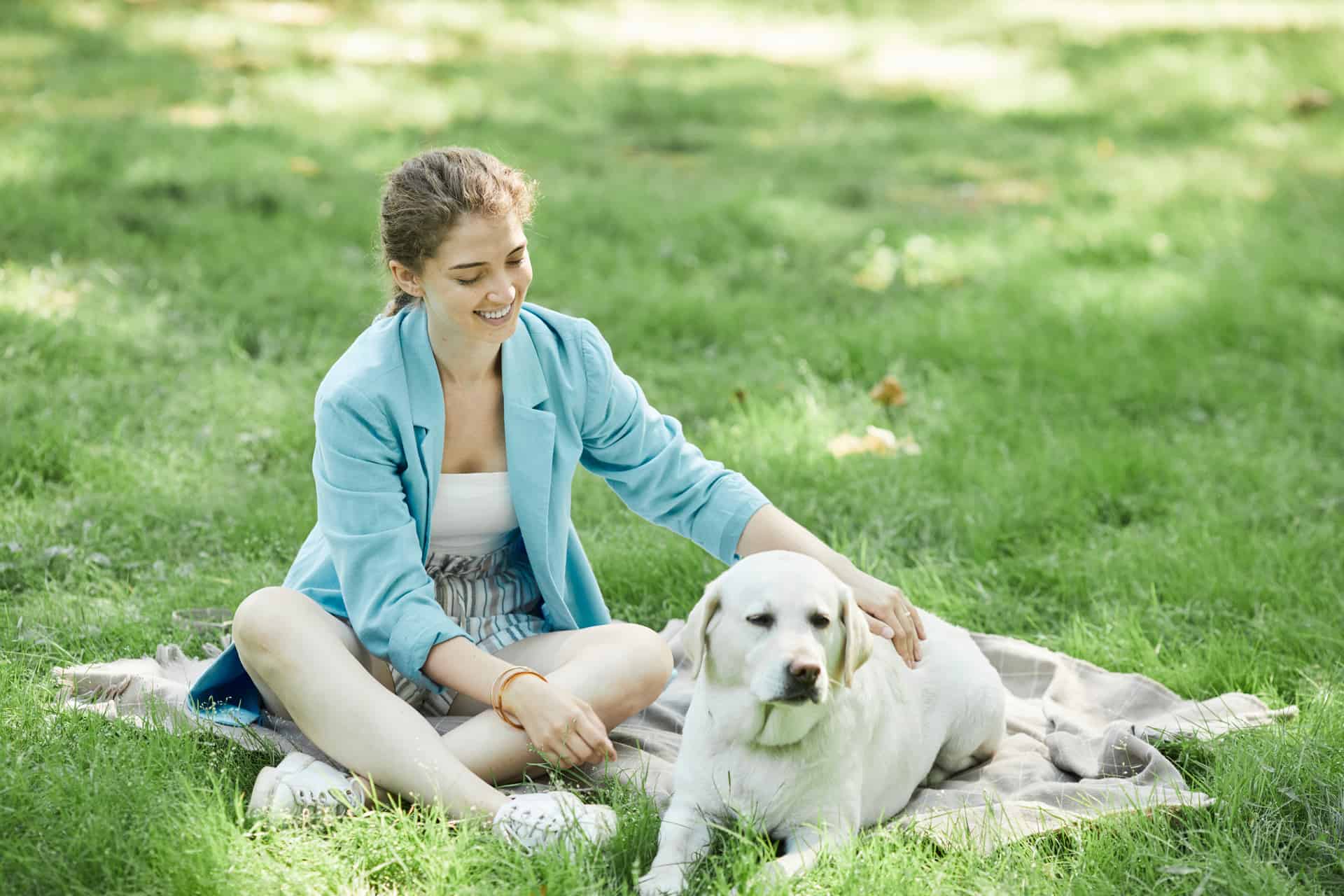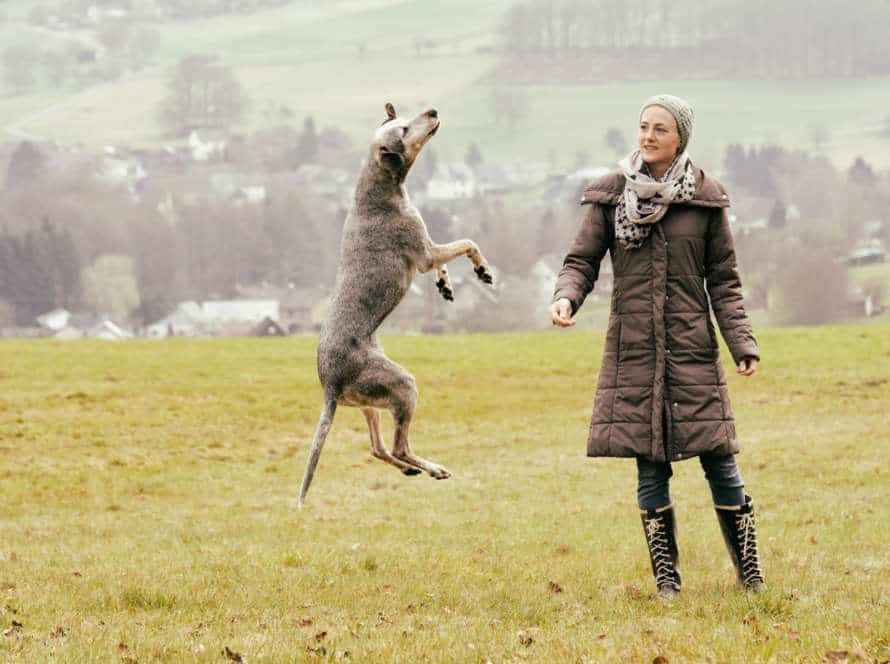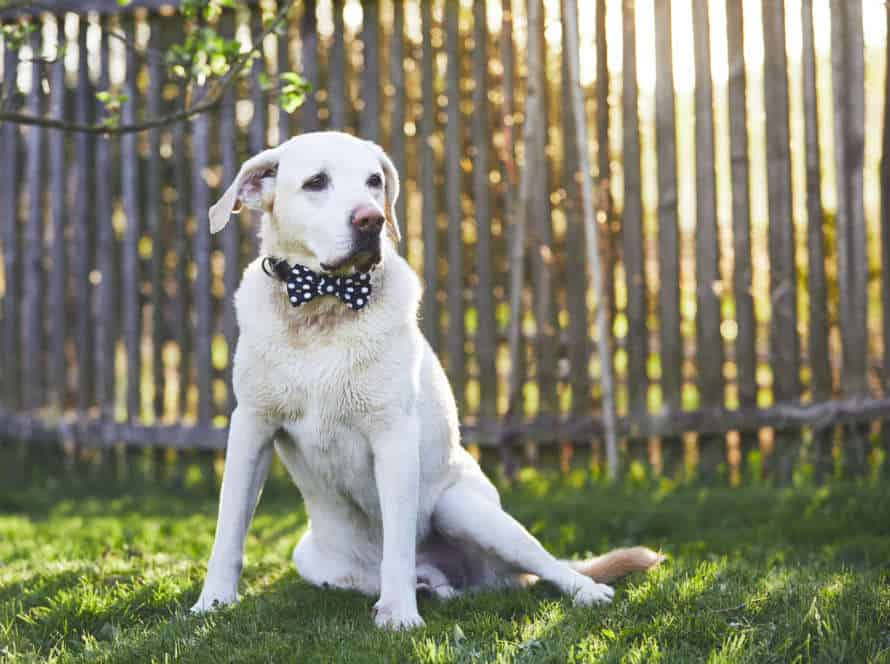The Soothing Effects of Canine Massage
Canine massage therapy offers a range of advantages for your four-legged pal. Plus, it’s a great way to bond! Here are some of its benefits:
- Reduces dog’s stress and anxiety.
- Eases muscle tension and pain.
- Enhances joint flexibility and movement.
- Increases circulation and blood flow.
- Enhances immune system.
By massaging your pup regularly, you can help them relax and feel better, leading to a more contented life.
Benefits of Canine Massage
Canine massage is a trend that’s on the rise! It’s great for pooches; it’s calming, soothing and relieves stress – physical, mental and emotional. Plus, regular massages can help with mobility and muscle tone, plus reduce recovery time after surgery or exercise.
Let’s learn more about the perks of canine massage!
Reduces Anxiety and Stress
Canine massage is a way to reduce your pup’s anxiety and stress. Kneading techniques and physical touch work together to soothe, release tension and induce relaxation. Here’s why it helps:
- Endorphins, natural painkillers and mood elevators, are released.
- Blood flow increases, reducing muscle stiffness and soreness caused by stress and anxiety.
- The nervous system calms, promoting a relaxed mindset and reducing fear or anxiety.
- The bond between you and your pup is strengthened, increasing comfort and security.
If your dog is anxious or stressed, give them a canine massage! It’s a simple and effective way to help their emotional health.
Eases Muscle Tension and Soreness
Canine massage therapy is an awesome way to ease muscle tension and soreness in dogs! Here are the benefits:
- Boosts blood circulation – it delivers oxygen and nutrients to muscles and tissues, promoting relaxation and healing.
- Reduces inflammation – massage stimulates the lymphatic system to remove waste products and fluids.
- Relieves muscle tension and soreness – endorphins are released, the body’s natural painkillers, and feelings of relaxation and wellbeing start.
- Enhances flexibility – gentle massage helps increase range of motion by stretching muscles and connective tissues.
- Manages stress and anxiety – relaxation and reduced muscle tension are promoted.
If you want to improve your pup’s well-being through massage, consider working with a certified canine massage therapist who will create a treatment plan for your pup’s needs.
Improves Circulation and Immune Function
Canine massage therapy has benefits. It boosts circulation and helps the immune system. It stimulates the muscles and tissues, increasing blood flow and eliminating toxins from the body.
Plus, it reduces stress and anxiety in dogs. It calms the nervous system and releases endorphins. This makes them feel relaxed and content.
For safety and effectiveness, find a qualified animal massage therapist who is experienced with dogs.
Regular massage sessions provide mental and physical health benefits for dogs. They enjoy a better quality of life and improved well-being.
Different Types of Canine Massage
Wow! Canine massage is awesome for dogs! It helps them feel great, both physically and emotionally. There are several types. Petting, stroking, and deep tissue massage all work differently, and offer unique advantages. This article discusses the different kinds of canine massage and the benefits of each.
Swedish Massage
Swedish massage is a popular canine massage. It helps with relaxation, reducing stress, and healing. It includes kneading, long strokes, and circles. Here are its benefits:
- Improving circulation and flexibility.
- Relieving tension and stiffness in muscles and joints.
- Releasing endorphins, which brings relaxation and feeling good.
Other kinds of canine massage are deep tissue, myofascial release, and trigger point therapy. Each has special techniques and advantages. Doing regular canine massage helps your pet’s health and strengthens your bond. So why not try it for your furry friend?
Deep Tissue Massage
Deep tissue massage is one of the top choices when it comes to canine massage. It applies slow, firm pressure to focus on particular muscles and ease tension in your pup’s body. Here are some advantages:
- Enhances blood circulation. This delivers more nutrients to the muscles and helps with toxin elimination.
- Your dog’s body heals itself by increasing the flow of oxygen and nutrients to the areas that need it.
- Loosens tight muscles and reduces spasms. This can help maintain the flexibility and range of motion in your pup’s joints.
Other types of canine massage are Swedish massage, Sports massage and Trigger Point massage – each with its own unique benefits.
Regular massage therapy can soothe your pup’s senses, improve their mood and decrease stress and anxiety.
Myofascial Release
Myofascial release is a type of massage for dogs. It works on the fascia, a tissue that covers and supports muscles and organs. The aim is to reduce pain and help with movement.
Two forms of myofascial release exist: passive and active. Passive involves applying gentle pressure and holding it for a while. Active means using movement and participation from the dog.
Canine massage, including myofascial release, can reduce stress, improve circulation, and boost flexibility. It also strengthens the bond between pet and owner.
How to Massage your Dog at Home
Canine massage therapy can help your pooch! It can reduce stress, ease pain, boost flexibility, and strengthen your bond. If you want to teach your dog to chill or just show them love, massage is a great way to do both. So, let’s learn the basics of canine massage.
Preparing the Space
Before you massage your pup at home, it’s important to prepare. Here’s how:
- Choose a quiet and calm space for them to relax in.
- Put a soft mat or blanket on the floor – no slipping!
- Dim the lights and play some soothing music at a low volume.
- Gather your massage tools – brush, oil, towels.
- Get rid of any distractions – phones, TVs, etc.
By prepping the space, you’ll help your furry friend get the most out of the massage.
Choosing the Right Time
Massaging your dog is great, but when’s the best time? Here are some tips:
- Choose a time when they’re calm, like after resting or eating.
- Don’t massage when they’re agitated, anxious or hyper.
- If they’ve had an injury or surgery, ask your vet when to massage and how often.
- Start with short sessions and work up to longer once they’re comfortable with it.
Supplies and Tools Needed
A massage for your pup at home has lots of advantages, like reducing stress, calming pain, and making your bond stronger. Here’s what you’ll need:
- A place to massage them, e.g. a comfy mat or bed.
- Oil or cream, like coconut or almond, to help your hands move smoothly on their skin.
- A towel to wipe up any oil or dirt.
- Treats to reward them and make it nicer.
- A soft-bristled brush or comb to identify areas of tension or soreness.
Plus, patience, a light touch, and watch your dog’s body language and signals to make sure they’re relaxed.
Finding a Professional Canine Massage Therapist
Canine massage therapy has lots of benefits for your pup! Better blood circulation, less stress and anxiety – massage can make your dog chill. For the best care, find a professional with the right training and experience. Here’s what to look for in a canine massage therapist:
Credentials and Reputation
When seeking a pro canine massage therapist, consider their credentials and rep. A few things to keep in mind:
- Credentials – Look for one certified by a recognized org. e.g. National Board of Certification for Animal Acupressure and Massage or the International Association of Animal Massage and Bodywork. This shows they’ve done rigorous training and meet specific standards/ethics.
- Reputation – Ask for referrals from pet owners/vet. Check for reviews/testimonials online. Check the therapist’s website for success stories/case studies.
A reputable massage therapist will assess your pup’s needs/prefs/temperament and tailor the massage to suit. This can lead to many benefits – increased circulation, reduced anxiety and improved mobility.
So, if you’re considering canine massage therapy, research to find a qualified and reputable practitioner.
Experience and Training
To get the best for your pup, finding a professional canine massage therapist is essential. They should have training and experience. They’ll know how to read your dog’s body language to identify areas that need extra attention.
When searching for a qualified massage therapist, look for these criteria:
- A therapist who’s done an accredited animal massage program.
- Experience with dogs of different ages, breeds, and sizes.
- References from vets or trusted pet owners who have used canine massage.
- Always request certifications, training, and experience.
You’ll be sure to have a great massage experience when you pick a well-trained, experienced therapist.
Cost and Availability
The cost of canine massage therapy can differ. It can range from $50 to $150 per session. Some therapists provide packages and discounts for multiple sessions.
In larger cities, more options may be available than in smaller towns or rural areas. It’s important to research and find a licensed and experienced therapist.
Before scheduling a session, make sure to ask the therapist about their experience and qualifications. Also, ask about techniques and equipment. Consult with your veterinarian to confirm that massage therapy is safe and appropriate for your dog.
Understanding When Canine Massage is Not Appropriate
Canine massage can be great for your pet’s relaxation and stress reduction. However, it is important to know when it is not suitable. Don’t attempt massage on pregnant, elderly, injured or ill animals. Also, animals with trauma, seizures or heart issues should not receive massage. It is essential to understand when massage is inappropriate. This keeps your pet safe and comfy.
Active Infections or Inflammation
Canine massage is great for chillin’ and reducing stress in pooches. But, if your pup has an active infection or inflammation, massage can make it worse. Signs include redness, swelling, and heat. Before getting back to massage, talk to your vet.
Pro tip: Regular massage can give your pup some zen vibes, but be aware of when it’s not safe.
Broken Bones or Fractures
If your pup has broken bones or fractures, don’t massage them! It won’t help and may even worsen the injury. They need immediate medical care from a vet.
Canine massage is gentle and non-invasive. It can help with aches, pains, and sore muscles. Here’s some of the perks:
- Less stress and anxiety for dogs.
- A more relaxed, restful sleep.
- Increased flexibility and motion.
- Improved circulation and immunity.
Before beginning any new treatments, be sure to check in with a vet. Especially if your pup has a medical condition or injury.
Cancer or Open Wounds.
Canine massage can be a great way to soothe your pup. But, it is not always suitable for every situation. Cancer and open wounds are two times when massage should be avoided.
If your dog has cancer or is getting treated, massage can cause inflammation and spread the cancer cells. So, hold off until they’re totally healthy again.
If your pup has an open wound or incision, massage can delay healing. Wait until the wound is fully healed and cleared by a vet before giving your dog a massage.
Always talk to your vet before giving your pup a massage. If your dog’s health or behavior is not normal, cancel the massage session.
Frequently Asked Questions
Q: What is canine massage?
A: Canine massage is a form of therapy that involves the manipulation of a dog’s muscles, tendons, and soft tissues to relieve tension, reduce pain, promote relaxation, and improve overall wellbeing.
Q: Is canine massage beneficial?
A: Yes, canine massage has numerous benefits for dogs, including reducing stress and anxiety, improving circulation, boosting immunity, and promoting flexibility.
Q: What are some of the specific conditions that canine massage can help with?
A: Canine massage can be beneficial for dogs with conditions such as arthritis, hip dysplasia, muscle strains, and injuries, as well as those recovering from surgery.
Q: How is canine massage performed?
A: Canine massage can be performed by a licensed massage therapist who specializes in working with dogs or by a trained veterinarian. The techniques used will vary depending on the dog’s condition, age, and individual needs.
Q: Is canine massage safe?
A: Yes, when performed by a licensed or trained professional, canine massage is generally safe and non-invasive. It is important to ensure that the therapist or practitioner has experience working with dogs and understands their anatomy and physiology.
Q: How often should my dog receive canine massage?
A: The frequency of canine massage will depend on your dog’s individual needs and condition. Some dogs may benefit from weekly or bi-weekly sessions, while others may only need occasional massages. It is best to consult with a licensed or trained professional to determine the best treatment plan for your dog.







